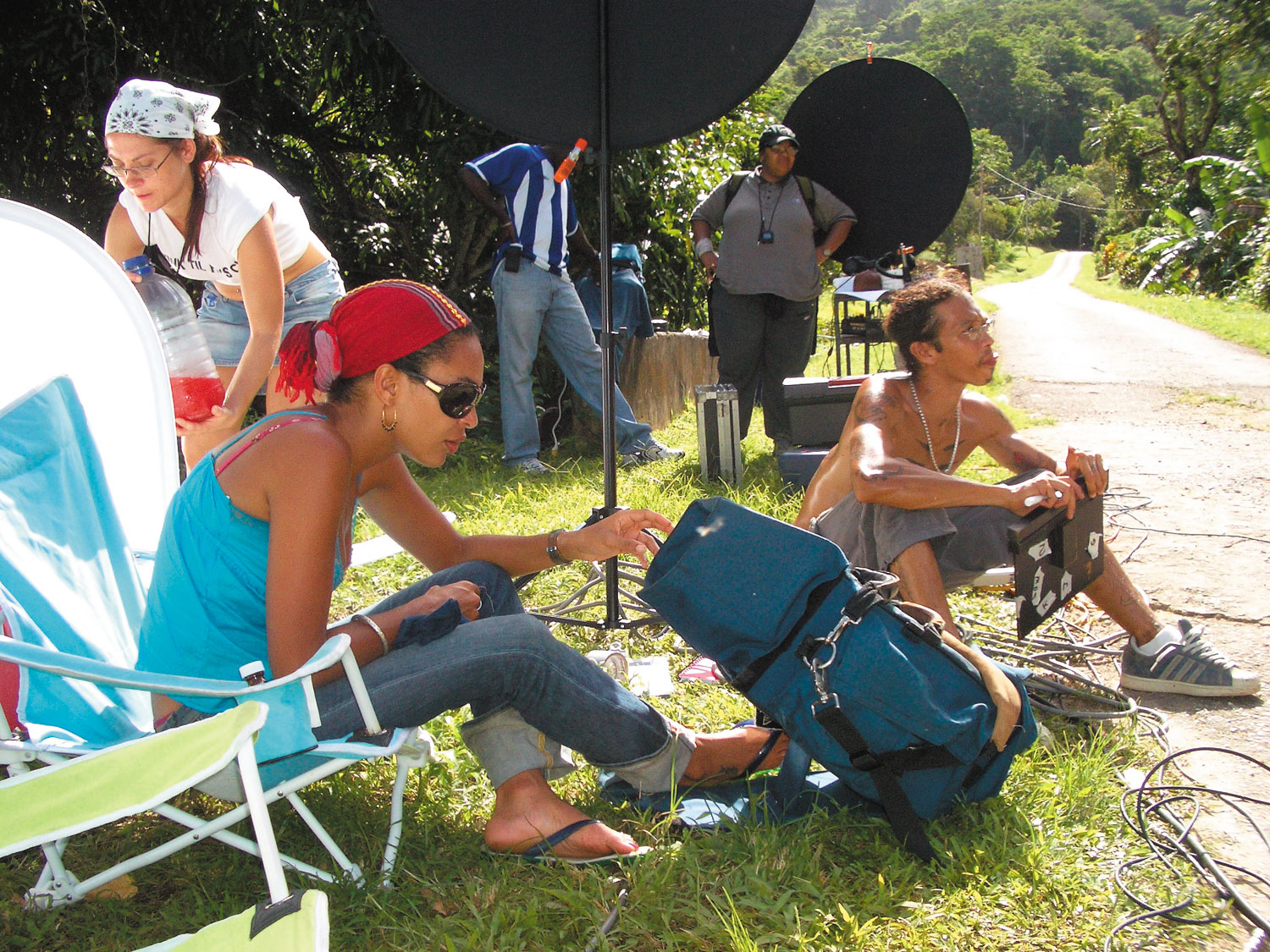What do you get when you cross two filmmakers and a visual artist with an award-winning writer? And what happens when these individuals happen to be members of the same family? One possible result is Joebell and America, the 90-minute made-for-television film which premiered on Trinidad’s TV6 in November 2004. The film is based on a short story by Commonwealth Writers Prize winner Earl Lovelace, adapted and directed by his daughter Asha, filmed and edited by his son Walt, with son Che acting as art director. (Lovelace’s two youngest daughters, Maya and Tiy, were also involved.)
For Asha, who shares screenplay credit on the film with her father, Joebell was her second experience adapting her father’s work — his short story “George and the Bicycle Pump” formed the basis of her thesis film at Cuba’s International School of Cinema and Television. She first heard “Joebell” read by her father in front of a foreign audience, and was impressed with both the story and the audience’s response.
“It’s a story for our time,” Asha says of Joebell’s theme — the search for cultural identity and self-actualisation in the context of a small island. “And Daddy gave me lots of space, initially, to explore it in my own way. I did the first set of drafts, then he looked at them and gave pointers. Where we might have had differences I deferred to the person with the greater experience!”
Walt, a cinematographer who has directed some of the country’s most innovative music videos, opened discussions about Joebell with Trinidadian media conglomerate Caribbean Communications Network (CCN) in late 2003; the project was given the green light in early 2004. An all-local crew and cast, led by Brian Green, the Trinidad-born, Paris-based opera singer who plays the title role, and veteran Trinidadian actors like Eunice Alleyne and Grace Maharaj, was assembled. Shooting took place over 23 days starting in July, primarily in Lopinot, a scenic village in the foothills of Trinidad’s Northern Range. Given the film’s budget — generous by local standards, but hardly gargantuan — Walt was forced to fall back on many of the tricks learned in his 20-plus years in the industry. “For instance, sunlight bounced off of huge sheets of plywood covered in silver fabric instead of big, expensive lights,” he says. “But that’s what you have to do to make films down here.”
Asha describes working with Walt and Che, who is an internationally recognised painter, as “fantastic.” “Walt is very focused, and knows his craft. He’s far more of a visual thinker than I, and fortunately we had a similar vision for the film. And Che basically did the work of an entire art department, with very little help.
“We’re all quite headstrong, and we had our differences, but if you have to butt heads with somebody, it might as well be with family.”


















